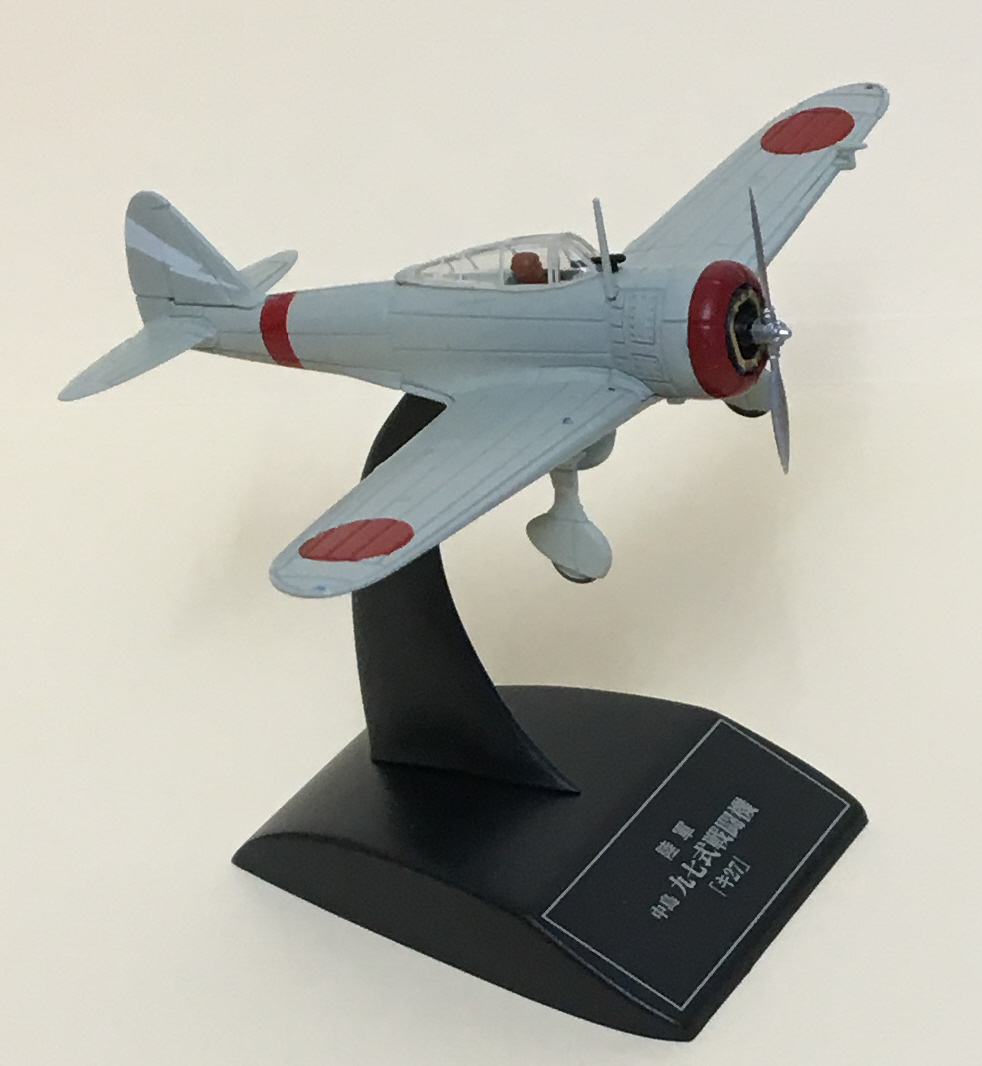FACTOIDS & TRIVIA
The Japanese Imperial Navy got out of the biplane era with the
A5M4 "Claude" in 1936. The Japanese Imperial Army also wanted a
monoplane of their own and held a design competition in 1935. Several
companies submitted designs and Nakajima won the contract in 1936
with their Ki-27 (allied
code name "Nate") to replace the Army's obsolete Kawasaki Ki-10 biplane
fighter. Like the Navy's A5M4, the Ki-27 was a modern
fighter by 1936 standards with stressed-skin construction and skirted,
fixed landing
gear. It was far faster and agile than any biplanes of the era and
was a match for most modern monowing fighters, including the Navy's
A5M4 which was 20 mph slower and did not have an enclosed cockpit. Its
biggest drawback, in addition to lack of self-sealing fuel tanks, was
that it was only fitted with a pair of .303 inch machine guns which did
not provide much firepower. The Ki-27 shown
below was the final variant (Ki-27b) that had underwing hard
points for bombs or a pair of 34 gallon fuels tanks.
The Ki-27 was used as a general fighter serving as
an interceptor as well as bomber escort. It saw action
in China during the second Sino-Japanese War where its main rival was
the Soviet Polikarpov I-16 flown by Chinese and Soviet pilots.
Leading up to World War II, the Ki-27 saw extensive action in China
against the famous AVG "Flying Tigers" with their Curtiss P-40B
Warhawks. The Ki-27 was
was used by Nakajima as a springboard to develop the Ki-43 Hayabusa
"Oscar" which quickly replaced the Ki-27 once World War II
began. Remaining Ki-27s were used as trainers and for kamikaze
missions at the
end of the war. However, the "Nate" was so successful that Nakajima
built 3,368 of them! Here's a mock battle sequence from a Japanese propaganda film where a squadron of Ki-27s takes on "Polikarpov
I-15" Soviet biplanes (actually Kawasaki K-10s) flown by "Chinese" pilots. Fast forward through it the interesting parts.
NAKAJIMA Ki-27b Type 97 "Nate"

Class: Fighter
Crew: 1
Engine: Nakajima Ha-1b Kotobuki 9-cylinder
radial (780 hp)
Max Speed: 292 mph at 11,500 ft
Climb Rate: 3,018 ft/min
Service Ceiling: 32,940 ft
Range: 390 miles
Armament: 2 x .303 inch machine
gun
(fuselage mount)
4 x 55 lb bombs
Model Scale:
1:87
Back
to the Japanese
Combat Aircraft of WWII
Menu

